Tyler S. Davis
Machine Learning Methods Applied to Cortico-Cortical Evoked Potentials Aid in Localizing Seizure Onset Zones
Nov 15, 2022Abstract:Epilepsy affects millions of people, reducing quality of life and increasing risk of premature death. One-third of epilepsy cases are drug-resistant and require surgery for treatment, which necessitates localizing the seizure onset zone (SOZ) in the brain. Attempts have been made to use cortico-cortical evoked potentials (CCEPs) to improve SOZ localization but none have been successful enough for clinical adoption. Here, we compare the performance of ten machine learning classifiers in localizing SOZ from CCEP data. This preliminary study validates a novel application of machine learning, and the results establish our approach as a promising line of research that warrants further investigation. This work also serves to facilitate discussion and collaboration with fellow machine learning and/or epilepsy researchers.
Discrimination Among Multiple Cutaneous and Proprioceptive Hand Percepts Evoked by Nerve Stimulation with Utah Slanted Electrode Arrays in Human Amputees
Mar 07, 2020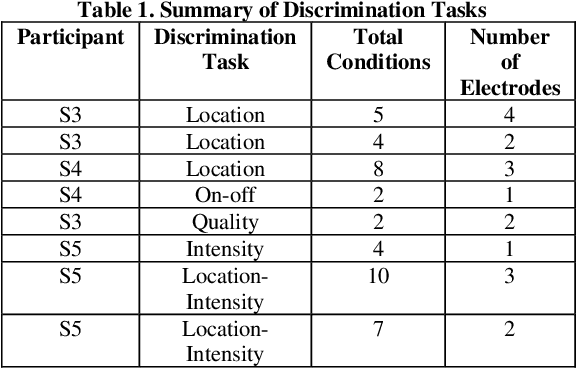
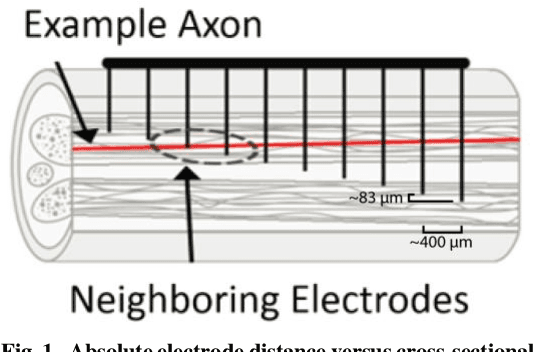
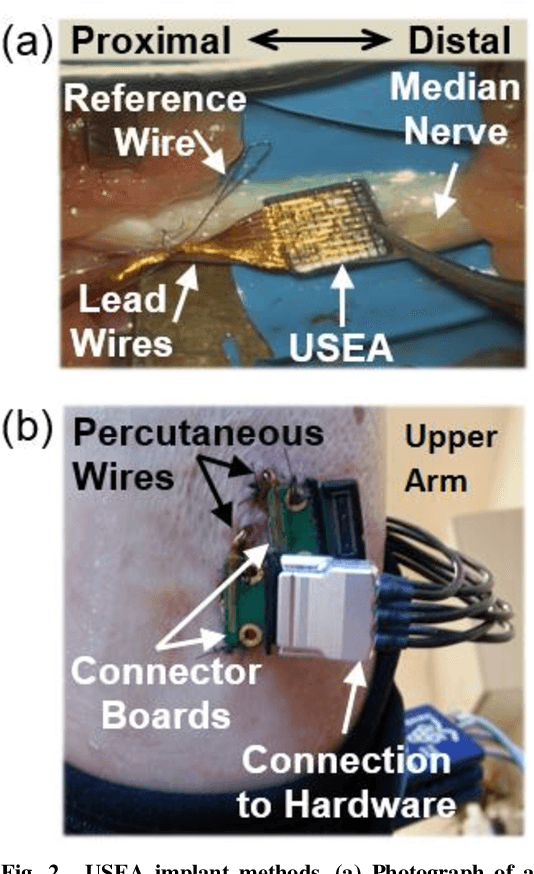
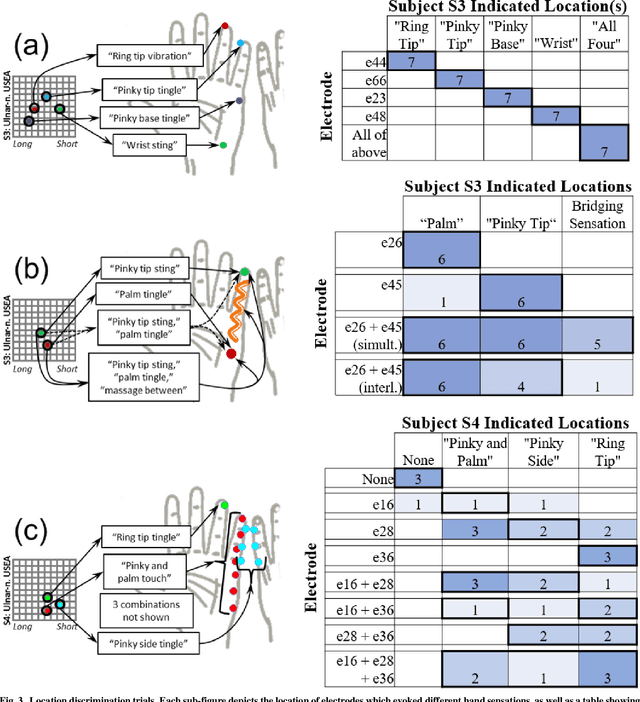
Abstract:Objective: This paper aims to demonstrate functional discriminability among restored hand sensations with different locations, qualities, and intensities that are evoked by microelectrode stimulation of residual afferent fibers in human amputees. Methods: We implanted a Utah Slanted Electrode Array (USEA) in the median and ulnar residual arm nerves of three transradial amputees and delivered stimulation via different electrodes and at different frequencies to produce various locations, qualities, and intensities of sensation on the missing hand. Blind discrimination trials were performed to determine how well subjects could discriminate among these restored sensations. Results: Subjects discriminated among restored sensory percepts with varying cutaneous and proprioceptive locations, qualities, and intensities in blind trials, including discrimination among up to 10 different location-intensity combinations (15/30 successes, p < 0.0005). Variations in the site of stimulation within the nerve, via electrode selection, enabled discrimination among up to 5 locations and qualities (35/35 successes, p < 0.0001). Variations in the stimulation frequency enabled discrimination among 4 different intensities at the same location (13/20 successes, p < 0.005). One subject discriminated among simultaneous, alternating, and isolated stimulation of two different USEA electrodes, as may be desired during multi-sensor closed-loop prosthesis use (20/25 successes, p < 0.001). Conclusion: USEA stimulation enables encoding of a diversity of functionally discriminable sensations with different locations, qualities, and intensities. Significance: These percepts provide a potentially rich source of sensory feedback that may enhance performance and embodiment during multi-sensor, closed-loop prosthesis use.
Intuitive Neuromyoelectric Control of a Dexterous Bionic Arm Using a Modified Kalman Filter
Oct 10, 2019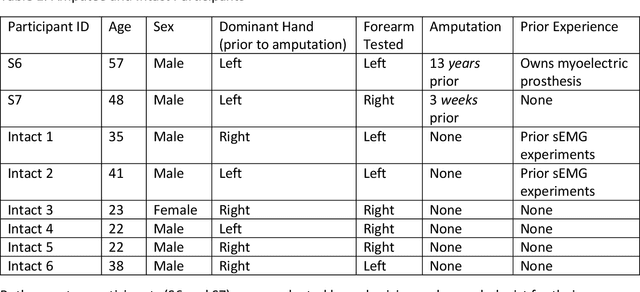
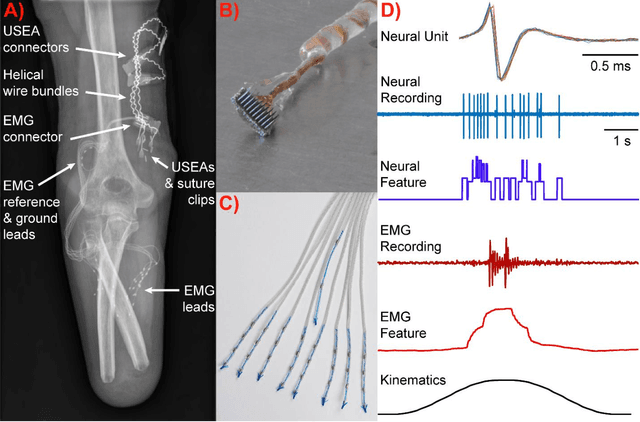
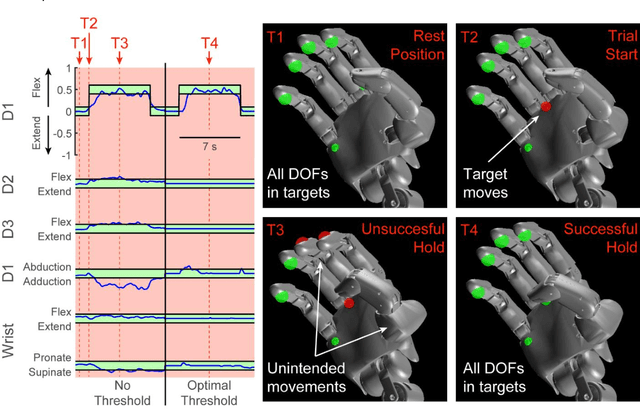
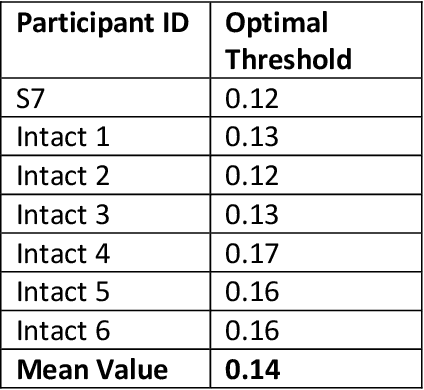
Abstract:Background: Multi-articulate prostheses are capable of performing dexterous hand movements. However, clinically available control strategies fail to provide users with intuitive, independent and proportional control over multiple degrees of freedom (DOFs) in real-time. New Method: We detail the use of a modified Kalman filter (MKF) to provide intuitive, independent and proportional control over six-DOF prostheses such as the DEKA "LUKE" Arm. Input features include neural firing rates recorded from Utah Slanted Electrode Arrays and mean absolute value of intramuscular electromyographic (EMG) recordings. Ad-hoc modifications include thresholds and non-unity gains on the output of a Kalman filter. Results: We demonstrate that both neural and EMG data can be combined effectively. We also highlight that modifications can be optimized to significantly improve performance relative to an unmodified Kalman filter. Thresholds significantly reduced unintended movement and promoted more independent control of the different DOFs. Gain were significantly greater than one and served to amplify participant effort. Optimal modifications can be determined quickly offline and translate to functional improvements online. Using a portable take-home system, participants performed various activities of daily living. Comparison with Existing Methods: In contrast to pattern recognition, the MKF allows users to continuously modulate their force output, which is critical for fine dexterity. The MKF is also computationally efficient and can be trained in less than five minutes. Conclusions: The MKF can be used to explore the functional and psychological benefits associated with long-term, at-home control of dexterous prosthetic hands.
A Modular Transradial Bypass Socket for Surface Myoelectric Prosthetic Control in Non-Amputees
Sep 26, 2019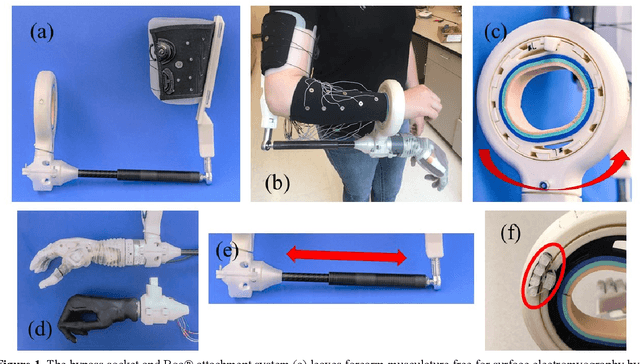
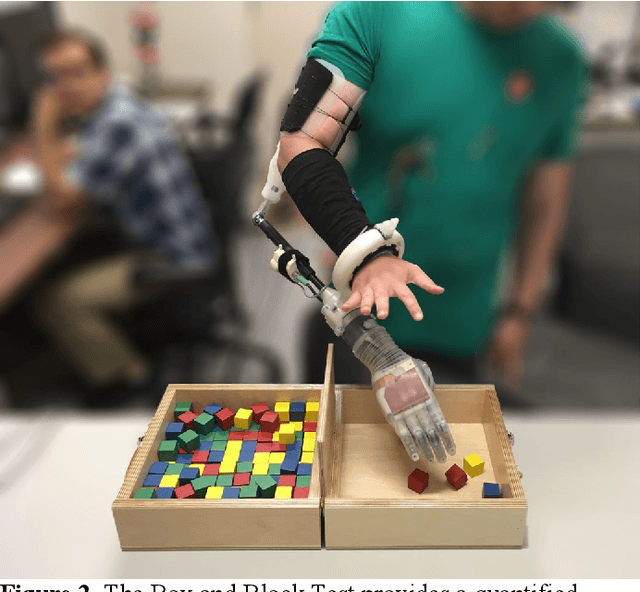
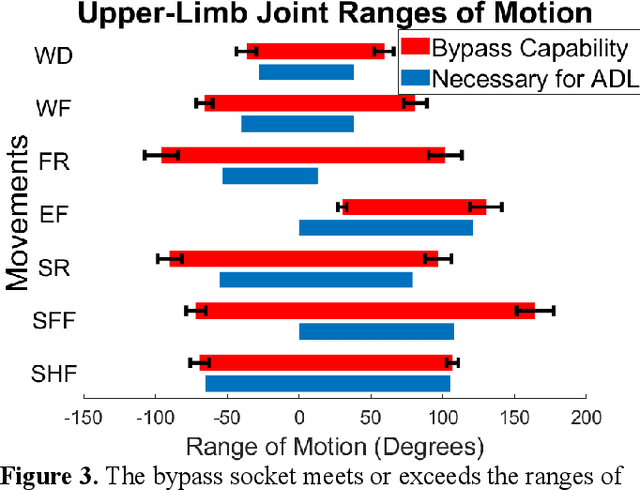
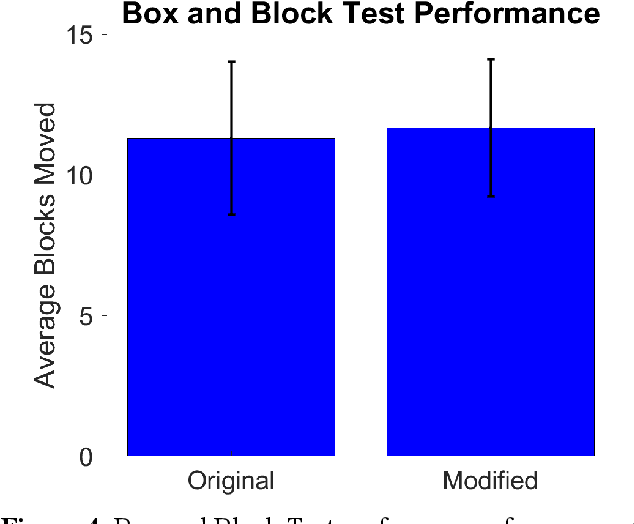
Abstract:Bypass sockets allow researchers to perform tests of prosthetic systems from the prosthetic user's perspective. We designed a modular upper-limb bypass socket with 3D-printed components that can be easily modified for use with a variety of terminal devices. Our bypass socket preserves access to forearm musculature and the hand, which are necessary for surface electromyography and to provide substituted sensory feedback. Our bypass socket allows a sufficient range of motion to complete tasks in the frontal working area, as measured on non-amputee participants. We examined the performance of non-amputee participants using the bypass socket on the original and modified Box and Block Tests. Participants moved 11.3 +/- 2.7 and 11.7 +/- 2.4 blocks in the original and modified Box and Block Tests (mean +/- SD), respectively, within the range of reported scores using amputee participants. Range-of-motion for users wearing the bypass socket meets or exceeds most reported range-of-motion requirements for activities of daily living. The bypass socket was originally designed with a freely rotating wrist; we found that adding elastic resistance to user wrist rotation while wearing the bypass socket had no significant effect on motor decode performance. We have open-sourced the design files and an assembly manual for the bypass socket. We anticipate that the bypass socket will be a useful tool to evaluate and develop sensorized myoelectric prosthesis technology.
* 8 pages, 5 figures
 Add to Chrome
Add to Chrome Add to Firefox
Add to Firefox Add to Edge
Add to Edge